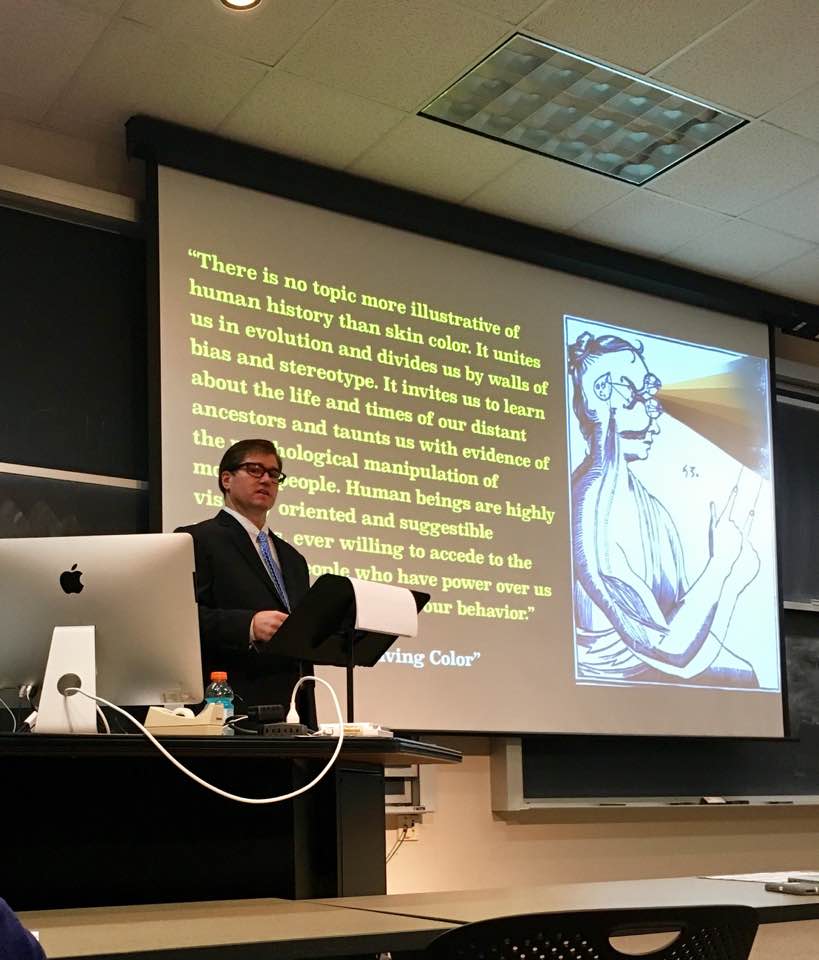The Department of Humanities has recently held two Doctor of Philosophy dissertation defenses by Keshab Acharya and Joel Beatty. Their PhD research revealed the interdisciplinary nature of the department, after almost five years of interrogating the interconnected academic disciplines of rhetoric, theory, history, literature, scientific and technical communication, philosophy and culture. Beatty’s advisor was Professor Stefka Hristova and Acharya’s was Professor Ann Brady.
Beatty’s work, “On the Logic, Methods and Scientific Diversity of Technical Systems: An Inquiry into the Diagnostic Measurement of Human Skin” explored the history of color measurement in general and that of the human skin, in particular, through the lenses of biology, anthropology, natural philosophy, language, medicine and technology.
According to Beatty, his interest in human skin stems from his initial curiosities about “color representations,” but his inquiries into color led him into archeology and history. From here he found that “digital color technologies are kinds of biological applications” that have been developed over long historical periods, from the Greeks to the present.
He argues that the diverse histories of human skin measurement inform the present scientific innovations of skin measurement. These innovations in digital applications “go beyond just health diagnosis and are creating new technical categorizations of human skin divorced from the established ethical mechanisms of modern science.”
Speaking to the Lode, Beatty said his work contributes too many fields of study, but fundamentally reminds us that “we should look at history from a new way” so that the mistakes of the past will not be repeated. In this sense one may think of how science was manipulated for harmful reasons like biological weaponry and racial categorizations that resulted in the infamous transatlantic slave trade.
“Older Adults as Audience: Exploring the Nexus between Usability, Information Design, and Aging in Technical Communication” is the title of Acharya’s dissertation. According to him, his interest in aging was inspired by the Irish poet William Butler Yeats’s “Sailing to Byzantium” which talks about the life cycle.
Acharya’s work focuses on how innovations in design could consider age, which has generally been overlooked, as a demographic factor in information design. He said his motivation was to make designers see aging from a positive light, as against the generally held negative notions of today. “I am against gerontology because aging is not a disease. You cannot diagnose aging and treat it, so it cannot be seen as a disease,” Acharya said.
During his research, Acharya went through 3,900 articles on older adults published in seven major journals in technical communication and usability studies and found that only 14 concentrated on older adults as audience in the technical communication field. His work, he believes, fills the great vacuum that is left unfilled. The work suggests that “technical communication instructors take older adults into consideration as audience and change the academic framework to afford students opportunities to explore more effective user centered design approaches needed for better design and documentation.”
About their futures, Beatty said he will work to turn his research into a book as he looks forward to taking up a faculty appointment when the chance comes. Acharya also said he will add some ethnographic research to his work and publish as a book in the future, as he has recently accepted a faculty appointment in a university.


